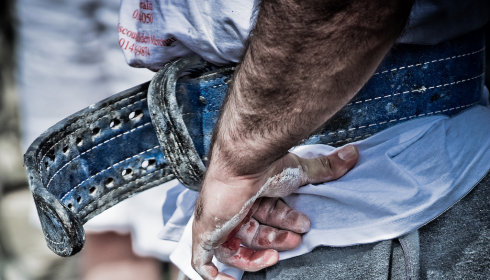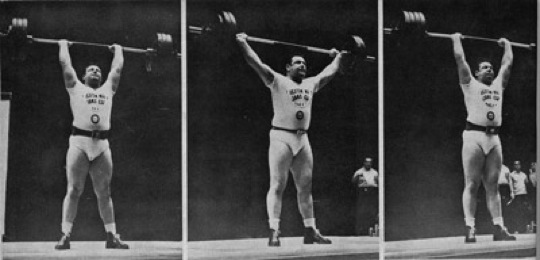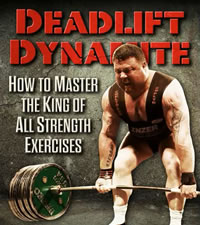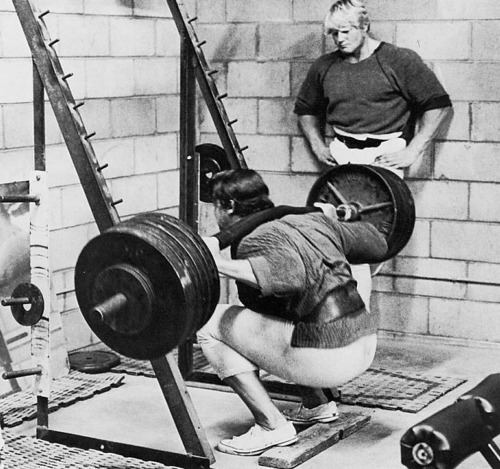Using a powerlifting belt is your best friend if you know how to use it properly. Notice how I said use a weightlifting belt, not wear. We all know the buckle should be in front (should it really?) and the belt should be relatively tight. However, the use of a belt seems to stop there for most people; when in reality it does so much more.

The History of weight lifting belts
Weight lifting belts have been used since weight training hit society. The oldest evidence I found of someone using a weight lifting belt is from a Health and Strength magazine, dating back to the 1950's. Although the date isn't listed on the cover, the price of 20 cents suggests the 1940's. With a piece of equipment being around for that long, it is clear why it’s true purpose has been washed away.

Whether you are the kind of person that refuses to wear a belt, or can’t lift without one, there is something to be learned from the idea. Where ever you stand on the topic, keep an open mind, there is something to be learned from everything.
The most important concept to understand when talking about power lifting belts is the topic of intra-abdominal pressure (IAP). When truly understood and harnessed, IAP will take your strength to new levels.
So what is IAP?
The best description of IAP I have found comes from Andy Bolton and Pavel in their book “Deadlift Dynamite”. (If you haven't read it,  pick it up! It’s awesome and it will take your training to new levels.) In “Deadlift Dynamite”, Bolton describes IAP as a balloon in a box. Take a box and stack a couple 45lb plates on top, and eventually it will collapse. So you do some core work to strengthen the sides of the box, stack a few more 45s on top and again the box will collapse. This time, get an industrial strength balloon, fill it up and stick it in. the heavy duty balloon will provide more support to the box, allowing it to handle a heavier load. The balloon you filled up is what we called intra-abdominal pressure. Ultimately the increase in IAP will allow you to create more tension within your body, allowing heavier loads to be lifted.
pick it up! It’s awesome and it will take your training to new levels.) In “Deadlift Dynamite”, Bolton describes IAP as a balloon in a box. Take a box and stack a couple 45lb plates on top, and eventually it will collapse. So you do some core work to strengthen the sides of the box, stack a few more 45s on top and again the box will collapse. This time, get an industrial strength balloon, fill it up and stick it in. the heavy duty balloon will provide more support to the box, allowing it to handle a heavier load. The balloon you filled up is what we called intra-abdominal pressure. Ultimately the increase in IAP will allow you to create more tension within your body, allowing heavier loads to be lifted.
In order to take IAP, we welcome in a weight lifting belt. Basically, a weight lifting belt, when used properly, provides a platform for the lifter to create greater amount of IAP, increasing the tension of the upper body. Bolton and Pavel, continue to describe IAP as volume control on your stereo, the more intensity of IAP, the greater the neural drive to the muscle at work.

Interestingly, In 2001 Zink et al. conducted a study looking at the effect of a weight belt on trunk and leg muscle activity and joint kinematics during the squat exercise. Subjects were randomly assigned to complete 1 rep at 90% of their 1RM with or without a weight lifting belt. Results of the study show no significant difference in muscle activity between the two conditions, but did find greater bar speed in the downward and upward phase of the lift in the weight belt group compared to the non-weight belt wearing group.
Even though results could be dismissed based on the noted difference in squat techniques, and lack of technique standards given for the squat, they still present a interesting result. Obviously more research needs to be done on the topic.
And now the practical stuff...
Are belts good for you? For an average person, belts are a safe option. Studies have shown an increase in blood pressure in subjects who wear a weight lifting belt. If you suffer from high blood pressure, you might want to think twice about something that will increase the already elevated blood pressure response you get from high intensity strength training.
If you are the kind of person that wears them because you have stability issues within your spine, I would urge on the side of caution with any excessive loads on your spine. Meet with a Physical therapist that truly understands spine kinematics, and let him give you the go ahead to put the pedal to the metal and train heavy.
Will wearing a belt weaken your core?
This topic could be slightly controversial. In the case of weight training, I would say no, a belt won’t weaken your core. Again, a weight lifting belt is designed to provide a platform to increase IAP, and increase stability and tension within your spine and torso. If your core is too weak to handle a certain load, you won’t be able to successfully complete a lift regardless of wearing a belt or not.

What is the proper way to wear a belt?
This seems pretty straight forward, literally. The buckle goes in front; pull it as tight as possible while still being able to take it off. The tricky part comes in the type of belt you use. If you use a belt that has a thin strap in front and think leather in the back you might want to turn it around. Remember it’s the pressure against the front of the belt that increases the stability within your spine, not so much the pressure against the back. I personally have a belt that is 4 inches thick all around, so no need to play around.

What is the difference between a 10mm and 13mm weight lifting belt?
Honestly, from everyone I have ever met they claim its personal preference. A 13mm will provide more support for you to press against while squatting and deadlifting, but I can imagine a 10 mm weight lifting belt providing that much less. A 13mm belt will cost you a little more from the wallet, but in the long run I assume the 13 mm belt will last longer.

